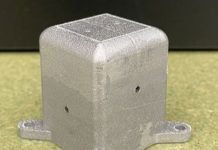
Researchers from Binghamton University, State University of New York, are using drones and LIDAR technology to uncover hidden WWII battlefields and help find missing servicemen.
This innovative project, led by Anthropology Professor Carl Lipo and Geography Associate Professor Thomas Pingel, focuses on the 1944 Battle of Guam.
During the battle, U.S. Marines faced the tough task of fighting their way up to Adelup Point, a fortified Japanese position.
The same technology used to locate ancient Maya ruins in Guatemala is now being used to map the Guam battlefield in great detail, which could lead to the recovery of missing servicemen.
This is the second WWII-related project for Lipo and Pingel, who are working with the Defense POW/MIA Accounting Agency (DPAA) and the International Archaeological Research Institute (IARI).
Last fall, they conducted similar research at Guadalcanal in the Solomon Islands.
“Our goal was to create a high-resolution map of the terrain so we could understand the landscape that soldiers had to navigate,” Lipo said.
“Most missing soldiers are in remote areas with rough terrain and dense jungle.”
To achieve this, they used LIDAR technology from drones. LIDAR, which stands for light detection and ranging, uses a laser to send beams to the ground.
Some beams penetrate the forest canopy and bounce back, allowing researchers to measure the ground distance. By flying the drones systematically over the area, they can create a detailed image of what lies beneath even the thickest forest.
The Guam mission required a larger drone with powerful lithium-ion batteries, which had to be shipped to the site. Getting permission to fly the drone was challenging because the battlefield is in a national historic park, and the flight path included a naval base and Guam International Airport.
The Battle of Guam took place from July 21 to August 10, 1944. The U.S. Marines recaptured the island, with around 1,700 Americans killed and 6,000 wounded, while approximately 18,000 Japanese soldiers died.
The researchers focused on Bundschu Ridge, a steep slope with caves that were used for machine-gun nests and hidden combatants. Historical photos show the area as mostly open terrain, but it is now covered with thick vegetation.
“These projects are fascinating because they let you see what soldiers saw and experienced,” Lipo said. “They had to navigate this difficult terrain under heavy fire.”
Back at Binghamton, Lipo and Pingel needed data points from the ground every 10 centimeters to build a detailed map. They optimized their drone flights to gather this data, flying more than two dozen missions in a tight pattern to ensure overlap.
“We flew all day, processed data all night, and repeated the process the next day,” Pingel said.
The flights generated around 3 billion data points, which now need to be processed. The detailed topographic images will be combined with historical data about troop movements to determine where soldiers were at specific times.
This information will help DPAA locate the remains of lost servicemen.



